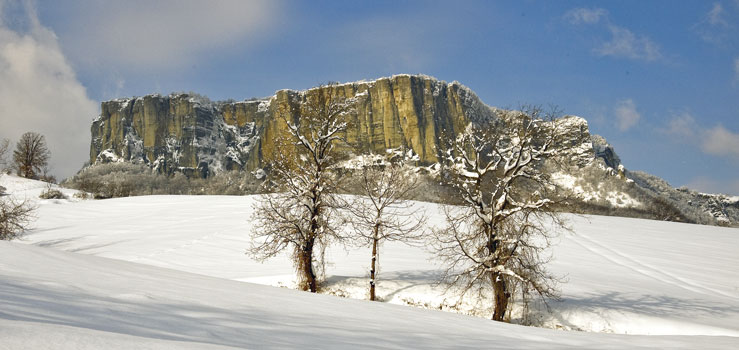The name Vologno (694 mt sl.m) indicates two clusters of buildings placed on the slopes of clay and marl to the south of Bismantova and to the right of the river Secchia.
In the ‘980 for the first time the chapel of Vologno figures in a diploma of Emperor Ottone II. In the Estimo dated 1615 are recognized in Vologno 32 homes for a total of 27 families. At the end of the eighteenth century there were 261 inhabitants, rising to 313 in the mid-nineteenth century.
The church, dedicated to St. Prospero, is always part of the parish of Campiliola first and then Castelnuovo. The current building, oriented with the apse facing west, has been remodeled several times on the grounds of the original Romanesque church and almost totally rebuilt just before 1874.
The upper village of Vologno, while not preserving buildings of relevant architectural merit, however, maintained the original features of the buildings and is therefore of great scenic interest. The lower village shows an undifferentiated urban structure, with aggregated nuclei divided by lowered arched underpasses.
Castle of Vologno
In this location (609 mt above sea level) can see the ruins of a fortified structure which was attached a small village, now almost completely destroyed. The “castle”, once best known as the “castle of Vologno”, controlled the valley of the river Secchia occupying the top of a anhydrite hill, specially set about the defense, through defensive cuts and shelves.
* Reference: Insediamenti storico e beni culturali appennino reggiano by Walter Baricchi

